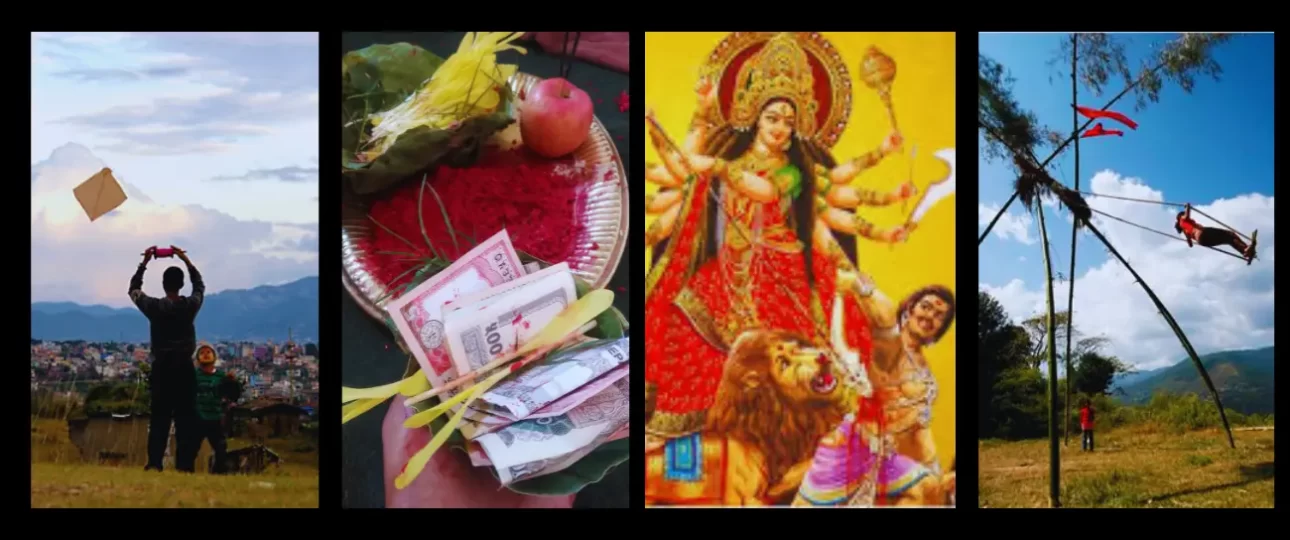Dashain Festival: The biggest celebration of Nepal
Dashain festival, also known as Vijaya Dashami, is the largest and most significant festival in Nepal, celebrated by Hindus across the country and among the Nepali diaspora worldwide. This 15-day festival typically falls between late September and mid-October, marking the triumph of the goddess Durga over the demon Mahishasura, symbolizing the victory of good over evil. The festival is not only a time for religious observance but also a period for family reunions, cultural celebrations, and social bonding.
Dashain commemorates the victory of Goddess Durga over the demon Mahishasura, symbolizing the triumph of good over evil. According to ancient texts, the demon Mahishasura had become powerful and invincible, terrorizing the gods. In response, Goddess Durga, a powerful incarnation of Shakti, was created to destroy him.
This fierce battle lasted nine days, culminating in Durga’s victory on the tenth day, known as Vijaya Dashami. This victory of Goddess Durga symbolizes the eternal fight between good and evil, truth and falsehood. Dashain teaches us that no matter how strong evil becomes, righteousness will always prevail.
The festival’s roots can also be traced to the epic Ramayana, where Lord Ram defeats the demon king Ravana. This duality of narratives—Durga’s battle against Mahishasura and Ram’s struggle against Ravana—highlights the overarching theme of righteousness prevailing against malevolence.
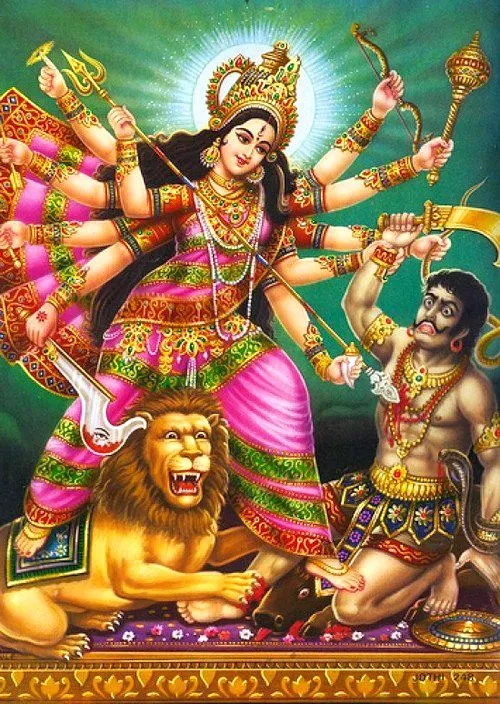
How is Dashain Celebrated in Nepal?
The preparations for Dashain start weeks before the actual festival begins. It’s a time of great excitement as households are busy with various activities to ensure they are ready for the grand celebrations. Preparations typically involve cleaning, decorating, shopping, and planning family gatherings.
Cleaning and Decorating the House
One of the first steps in preparing for Dashain is thoroughly cleaning and decorating the house. Nepali families believe that the goddess Durga visits clean and pure homes, so houses are scrubbed from top to bottom. This is also symbolic of welcoming new energy, prosperity, and blessings into the home.
During Dashain, many homes are decorated with traditional items such as flowers, leaves, and vibrant fabrics. People also hang garlands made from marigold flowers, considered sacred in Hindu culture. Additionally, many households set up a sacred space, called a puja room, where religious rituals will be performed throughout the festival.
Buying New Clothes and Gifts
Dashain is a time of renewal, and buying new clothes is an important part of the celebration. New clothes symbolize new beginnings, and everyone, from children to the elderly, purchases new outfits for the occasion. This is one of the highlights of Dashain for children, who eagerly look forward to showing off their new clothes to friends and relatives.
In addition to clothing, people also buy gifts for their family members. These gifts, ranging from sweets and fruits to more valuable items, are exchanged during family gatherings as tokens of love and appreciation.
Family Reunions
Dashain is primarily about family gatherings. The festival serves as a time for individuals who have migrated for work or education to return home and reconnect with their loved ones. The joy of being together under one roof during this auspicious time creates an atmosphere filled with warmth and affection.
Kite Flying
Kite flying is a popular activity during Dashain, symbolizing joy and community spirit. It is believed that flying kites sends a message to the rain god to cease rainfall during this festive period.
As the festival approaches, the skies above Nepal become a canvas painted with colorful kites of various shapes and sizes. Children and adults alike often gather on rooftops or open spaces, competing to cut each other’s kite strings while shouting “Changā chet!”—a phrase used to celebrate a successful cut. This friendly rivalry enhances community bonds as neighbors cheer each other on.

Bamboo Swings (Ping)
Another cherished tradition during Dashain is the construction of bamboo swings known as “ping.” These swings are typically erected in open spaces or community areas and are made using traditional methods involving bamboo sticks and ropes crafted from tough grass. It is believed that one must leave the ground once a year by riding the swing in the Dashain festival.
Historically rooted in Nepalese culture, bamboo swings have been associated with various festivals for centuries. Their connection to Hindu mythology, particularly the shape reminiscent of the Shiva Linga, adds a spiritual dimension to the activity. Swinging is seen as a way to connect with divine energies and seek blessings for health and prosperity in the coming year.
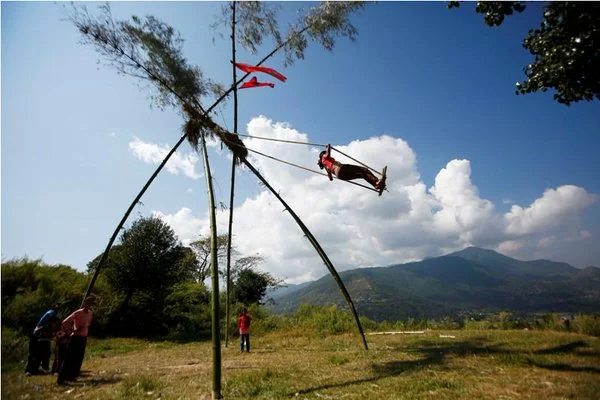
Card Games
Though often illegal, friendly gambling games are popular during Dashain as families gather to enjoy card games together. While children are busy flying kites, older family members often indulge in card games during Dashain. These gatherings provide an opportunity for adults to socialize, reminisce about past experiences, and enjoy friendly competition.
Phases of Dashain
Each of the 15 days of Dashain holds religious and cultural significance, and different rituals are performed on each day. The most important days are Ghatasthapana (the first day), Phulpati (the seventh day), Maha Ashtami (the eighth day), Maha Navami (the ninth day), and Vijaya Dashami (the tenth day).
15 Days Dashain Festival Timeline
Ghatasthapana (Day 1): The festival begins with the establishment of a sacred pot (kalash) filled with holy water and barley seeds.
Fulpati (Day 7): Sacred flowers and plants are brought to homes as part of the celebrations.
Maha Ashtami (Day 8): This day involves significant rituals including animal sacrifices to honor Goddess Durga.
Maha Navami (Day 9): A continuation of worship and offerings.
Vijaya Dashami (Day 10): The most important day where families gather to receive blessings through Tika (a mixture of yogurt, rice, and vermilion).
Kojagrat Purnima (Final Day): The festival concludes with family visits and final rituals.
What are the main rituals performed during Dashain?
Ghatasthapana: The First Day of Dashain
The festival officially begins with Ghatasthapana, which translates to “planting of the sacred jar.” On this day, a pot (ghata) filled with holy water is placed in a prayer room, symbolizing the goddess Durga. This is a sacred ritual that marks the beginning of the festival.
The household’s most senior female member takes responsibility for this ceremony. Barley seeds are also planted in a sand-filled pot alongside the water jar. The seeds are allowed to sprout into Jamara, yellow-green barley shoots, which will be used in rituals on the tenth day of Dashain, known as Vijaya Dashami. These sprouts symbolize fertility, prosperity, and the blessing of the goddess.
During Ghatasthapana, prayers are recited, and from this day onward, worshipers pay daily homage to the goddess Durga by offering flowers, fruits, and other items until the final day.
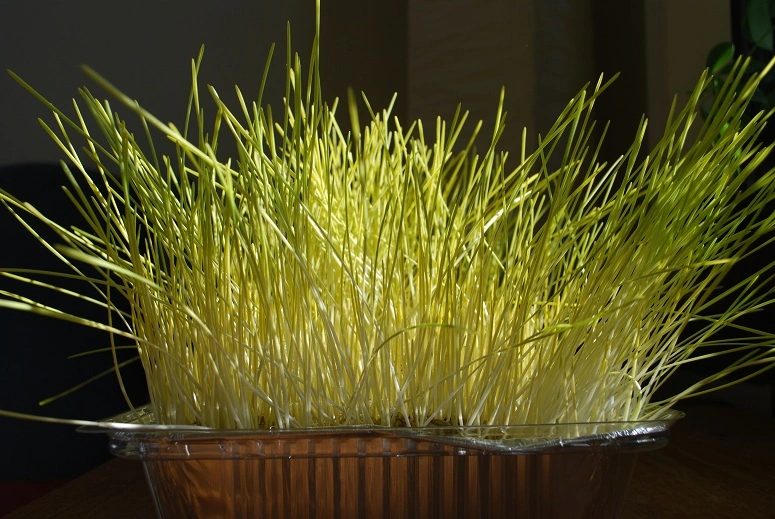
Phulpati: The Sacred Day
Phulpati, the seventh day of Dashain, is when sacred flowers, leaves, and fruits are carried to various temples, especially in Kathmandu, where they are used in ceremonial offerings. The term Phulpati combines two words: phul (flower) and pati (leaves), both of which are integral to the worship rituals.
The highlight of this day is the Phulpati procession, a grand event that begins at Gorkha and makes its way to the capital. Government officials, soldiers, and citizens all participate in this ceremonial march. In the Kathmandu Valley, it’s a day of great celebration, and families gather for feasts and socializing.
Maha Ashtami and Sacrifice Rituals
Maha Ashtami, the eighth day of Dashain, is one of the most intense and revered days. On this day, people worship Kali, the fearsome form of Goddess Durga, who is associated with destruction. This day is particularly important for its animal sacrifice rituals.
Throughout Nepal, goats, buffaloes, ducks, and other animals are sacrificed as an offering to the goddess. The blood of the sacrificed animals is considered pure and is believed to please the goddess, ensuring her protection for the year ahead. Although the practice of sacrifice is controversial, it is a tradition followed by many families and communities.
The sacrificed animals are prepared and shared as a meal with family members, marking the unity of the occasion.
Maha Navami
Continuation of Worship: Similar to Maha Ashtami, this day involves further worship and sacrifices. It is also a day for honoring tools and vehicles, where people pray for protection against accidents in their daily lives.
Vijaya Dashami: The Main Day
The tenth day, Vijaya Dashami, is the most important and highly anticipated day of Dashain. It is the day when Goddess Durga achieved victory over the demon Mahishasura, and as a symbol of this victory, family members receive Tika and Jamara from their elders.
The Tika, a mixture of rice, yogurt, and red vermilion, is placed on the forehead while elders offer their blessings for prosperity, health, and success. The Jamara (barley sprouts) are placed behind the ears or on the head. This symbolic act represents the transfer of blessings from the older generation to the younger, and it fosters strong familial bonds.
This day is filled with joy, laughter, and reunions, as family members who live far away return home to receive blessings from their elders. The younger generation also receives Dakshina, monetary gifts, from their elders, adding to the festivity.
The ritual of Tika and Jamara continues for five days after Vijaya Dashami, during which time people visit extended family and friends to exchange blessings and celebrate together.
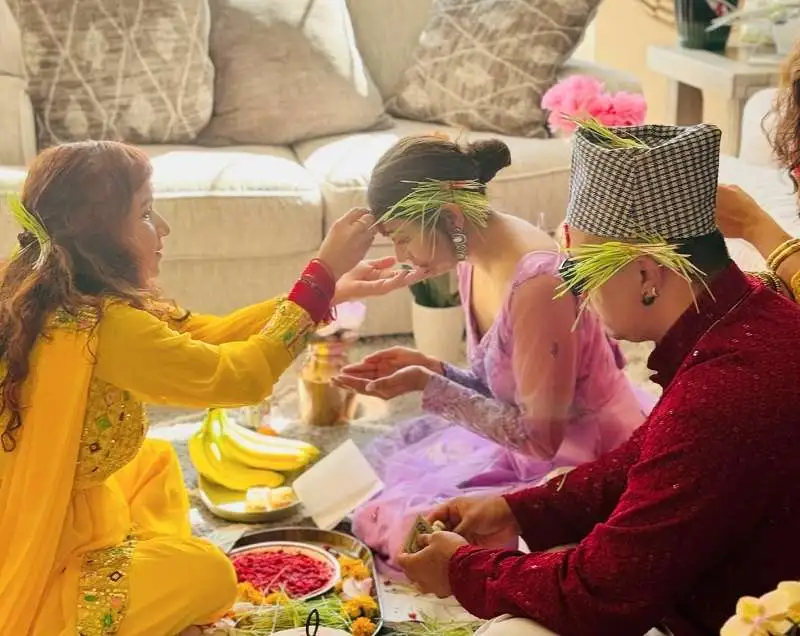
Final Day: Kojagrata Purnima
Worship of Goddess Laxmi: The festival concludes on Kojagrata Purnima, when people worship Goddess Laxmi, seeking wealth and prosperity. It is believed that she visits homes on this night.
Importance of Tika and Jamara in Dashain
Tika and Jamara hold deep spiritual significance in the Dashain festival.
On Vijaya Dashami, family members gather to receive Tika, which is a mixture of rice, yogurt, and vermilion powder applied to the forehead. This act is not merely ceremonial; it is a way for elders to bestow blessings of happiness, prosperity, and health upon the younger generation.
The red Tika represents the divine blood of the goddess Durga and serves as a protective mark for the individual receiving it. This mark is believed to safeguard the individual from misfortune and evil throughout the year.
Alongside Tika, Jamara—sprouted barley or maize—is also presented during the ceremony. Jamara represents life, fertility, and prosperity. Its presence in the Tika ceremony enhances the blessings being conferred and signifies the growth and good fortune that families hope to cultivate in the coming year.
The tradition of applying Tika extends beyond Vijaya Dashami; it continues until Kojagrat Purnima (the fifteenth day), allowing for extended familial interactions and blessings throughout the festival period.
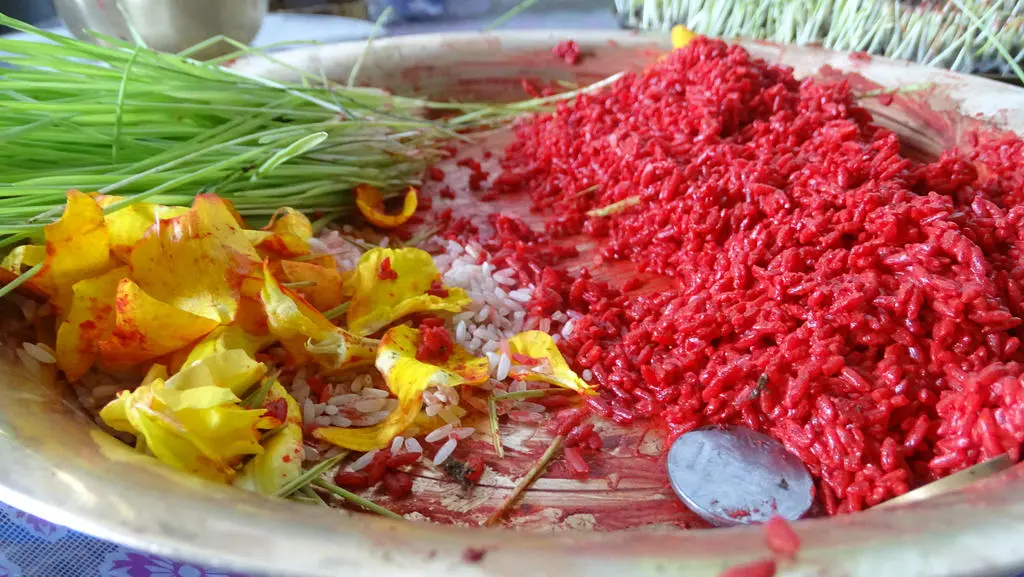
Dashain Celebrations Across Different Ethnic Groups
Nepal is a diverse country with over 125 ethnic groups, each with its unique cultural traditions, languages, and practices. While Dashain is celebrated across the nation, the way it is observed varies widely from group to group.
Each ethnic community brings its own flavor and customs to the festival, enriching the experience of Dashain with regional and cultural differences. Despite these variations, the underlying themes of family, prosperity, and the triumph of good over evil remain universal.
Among the Brahmin and Chhetri communities, Dashain is marked by deep religious observances. Rituals such as Ghatasthapana, the sowing of barley seeds symbolizing prosperity, and daily prayers to Goddess Durga are central. These families emphasize receiving blessings through the Tika and Jamara ceremonies and often engage in animal sacrifices, which are followed by lavish family feasts.
In contrast, the Newar community, indigenous to the Kathmandu Valley, blends Hindu and Buddhist elements into their celebrations. While they also revere Goddess Durga, the Newars incorporate local deities into their worship and engage in unique feasting traditions, with dishes like Choila and Yomari.
For the Tamang people, who are primarily Buddhist, Dashain is less about religious devotion and more about honoring ancestors. Tamang families create altars for their ancestors, combining Buddhist rituals with symbolic participation in Tika and Jamara ceremonies.
The Magar people, an indigenous group in Nepal, celebrate Dashain with a strong connection to the harvest season. Their rituals focus on giving thanks for agricultural abundance, and their celebrations are often communal, with village-wide gatherings for feasting and dancing.
The Tharu community, primarily residing in the Terai region, also incorporates a nature-centric focus into their Dashain celebrations. Animal sacrifices, communal feasts, and honoring local nature spirits are key elements of their observances.
Meanwhile, the Sherpa community, although largely Buddhist, partakes in Dashain as a cultural event, focusing on family gatherings, ancestor worship, and strengthening familial bonds.
While the specific rituals and customs vary widely among these groups, Dashain remains a unifying force across Nepal. It brings together communities from different cultural backgrounds, fostering a sense of unity through shared values of family, renewal, and celebration of life’s blessings.
Trekking in Nepal during Dashain
Trekking in Nepal during Dashain offers a unique and enriching experience, as the festival coincides with the peak trekking season in October. This period not only provides excellent weather and trail conditions but also allows trekkers to immerse themselves in the vibrant festive atmosphere of Nepal.
Dashain, Nepal’s biggest festival, transforms the trekking experience into something truly special. The country is abuzz with celebrations, and trekking during this time allows visitors to witness and partake in these festive activities. The trails are bustling with both local and international trekkers, making it a lively and dynamic time to explore Nepal’s renowned trekking routes.
If you trek to the western regions of Nepal, such as Annapurna Base Camp or Ghorepani Poon Hill, you will have the opportunity to celebrate Dashain with the locals. These areas are not only popular for their stunning natural beauty but also for their cultural richness. During Dashain, you might find local communities engaged in traditional celebrations, including the Tika ceremony, where elders bless younger family members with Tika and Jamara (barley shoots).
In addition to international trekkers, many domestic travelers also venture out into the hills and mountains during Dashain. For Nepalese trekkers, this period is a perfect opportunity to combine their love for trekking with the festive celebrations. The trails are lively, and trekkers of all backgrounds come together to enjoy the festival and the natural beauty of the Himalayas.
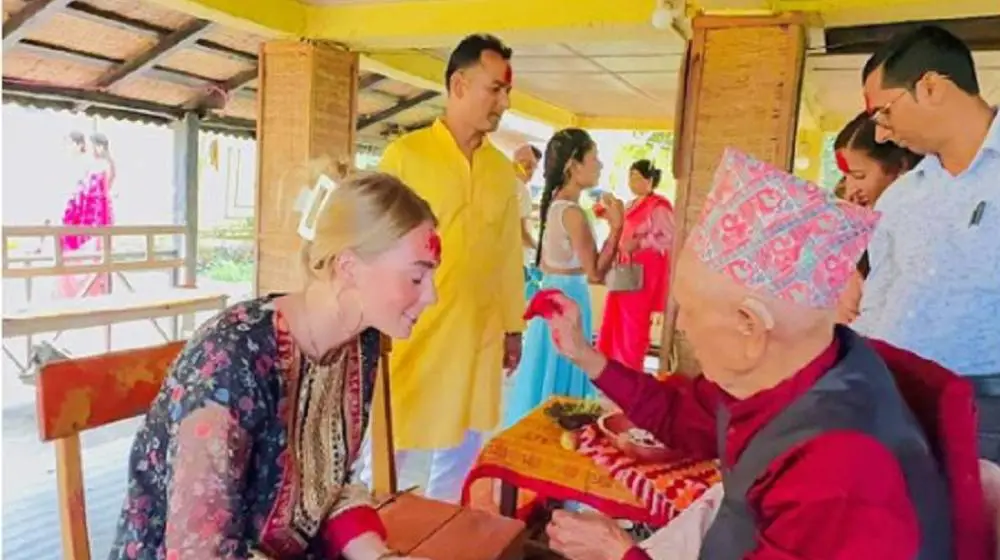
Conclusion
Dashain transcends mere religious observance; it embodies the essence of Nepali culture through its emphasis on family unity, respect for traditions, and celebration of life. As one of the longest public holidays in Nepal, it serves as a reminder of cultural heritage while promoting social harmony among its people. The festival not only reflects spiritual beliefs but also highlights the importance of community and familial bonds that are integral to Nepali society.
FAQs
Why is Dashain considered the biggest festival in Nepal?
Dashain is considered the biggest festival because of its nationwide celebration, cultural significance, and the fact that it lasts for 15 days, involving family reunions, religious rituals, and social bonding.
What is the significance of Tika and Jamara in Dashain?
Tika and Jamara symbolize the blessings of Goddess Durga, offering protection, prosperity, and longevity to those who receive them.
How long does the Dashain festival last?
Dashain lasts for 15 days, with each day carrying its own significance, though the major celebrations happen on the tenth day, known as Vijaya Dashami.
What kind of food is traditionally prepared during Dashain?
Traditional foods include meat dishes like mutton and chicken, rice, lentils, and various sweets and delicacies like sel roti and rice pudding (kheer).
How does Dashain promote family bonding?
Dashain is a time when families come together to celebrate, perform rituals, and receive blessings from elders, making it a perfect occasion for family bonding.
